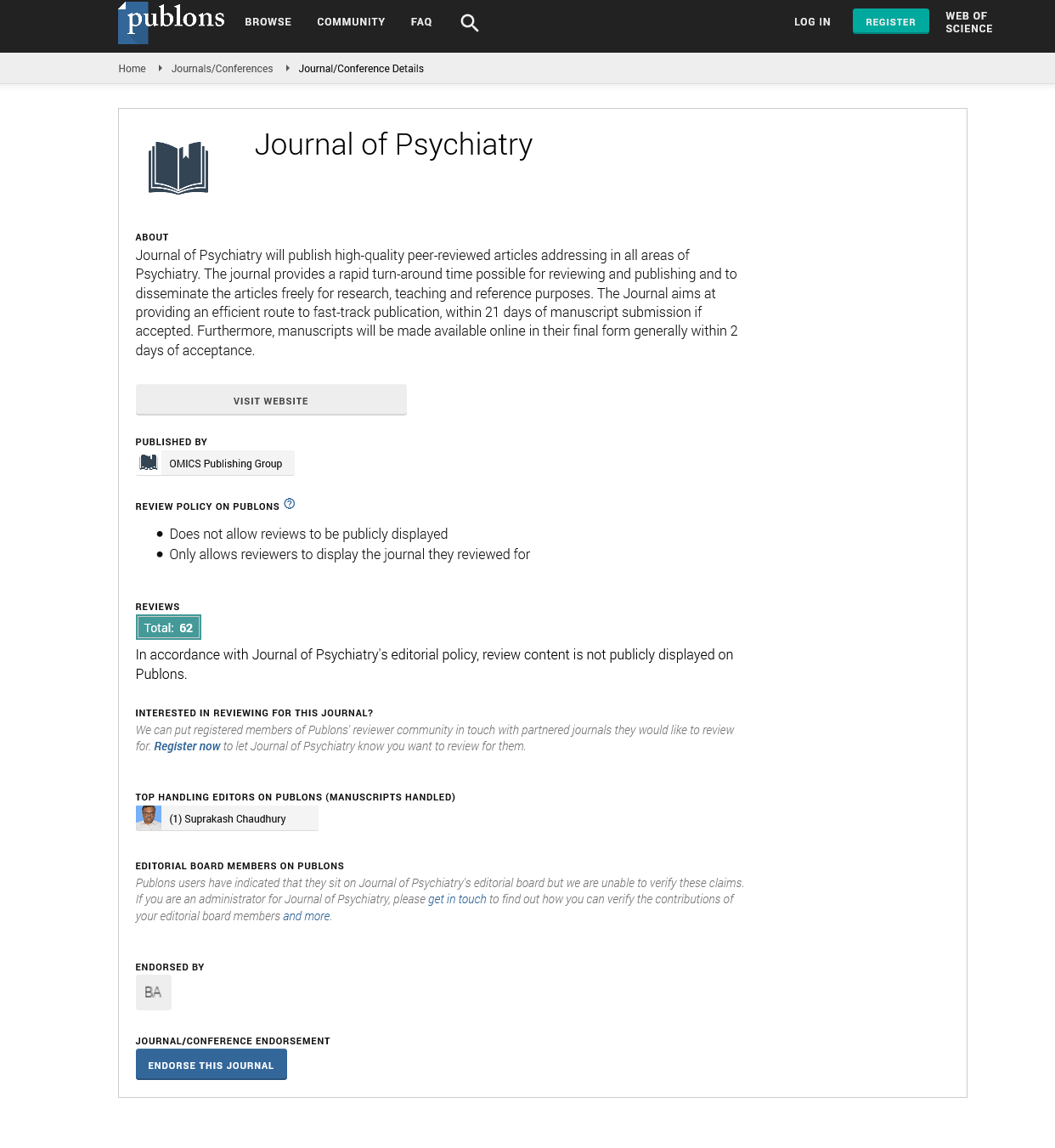Indexed In
- RefSeek
- Hamdard University
- EBSCO A-Z
- OCLC- WorldCat
- SWB online catalog
- Publons
- International committee of medical journals editors (ICMJE)
- Geneva Foundation for Medical Education and Research
Useful Links
Share This Page
Open Access Journals
- Agri and Aquaculture
- Biochemistry
- Bioinformatics & Systems Biology
- Business & Management
- Chemistry
- Clinical Sciences
- Engineering
- Food & Nutrition
- General Science
- Genetics & Molecular Biology
- Immunology & Microbiology
- Medical Sciences
- Neuroscience & Psychology
- Nursing & Health Care
- Pharmaceutical Sciences
Is mouth better than nose approach for brain protection in OHCA?
16th World Congress on Psychiatry and Psychological Syndromes
April 24-25, 2017 Las Vegas, USA
Guy Hugues Fontaine
Université Pierre et Marie Curie, France
Keynote: J Psychiatry
Abstract:
Background & Aim: A new technique of localized brain hypothermia to produce cooling by adiabatic gas expansion. Two approaches can be considered; fossa nasalis up to the nasopharynx and mouth up to the oropharynx. The purpose of this work is to compare the possible respective benefits, risks and limitations of these two methods. Method: 22 cadavers mean age 77±11.4 SD (56-96) were studied at the School of Surgery in Paris. One case was not valid because of major clots in both fossa nasalis. Slightly curved brass tubes (4 mm �?) were inserted perpendicular to the head axis in the two nostrils up to block. Depth of penetration in cm was measured on both sides of the nasal septum. Data were processed by Statistica v6.0. A p value�?�0.05 was considered as significant. Results: Depth of penetration was 10.8±1.47 (7-13) for the right nostril and mean 10.7±1.46 SD for the left nostril, this difference is not significant p=0.7. However, the difference in depth was 0.1±1.28 (-3.5-3.5). A difference �?�0.5 cm was observed in 6 cases (27%). Conclusion: Mouth approach looks less aggressive than nasal approach for cooling the posterior part of the head and more specifically the brain for the treatment of out of hospital cardiac arrest (OHCA). It could be performed by non-CPR trained bystanders with minimal training and therefore started before the intervention of EMS. Discussion: Nose: fossa nasalis is closer to the brain; however, distortion of the nasal septum may reduce penetration in 27% of patients. This may explain that cases of epistaxis have been reported. In addition, if the angle of introduction is not perpendicular to the head axis as it should be but follows the direction of the nose a blockage occurs before entering the target area. This could reduce the effectiveness of cooling and subsequently the success of the method. Mouth: is easy to access, no block up to the oropharynx, can be used by a lay person with no training with no risk of injury. In addition mouth and tongue offer a large surface exchange area which can be important for general cooling (in addition to localized cooling) for the protection of the heart and other noble organs as the liver, kidney and the lungs. However, oropharynx is more distant from the brain than nasal cooling. Therefore cold produced will take longer to reach the brain area. This limitation can be counterbalanced by faster administration of cooling before EMS arrival in the field.
Biography :
Guy Hugues Fontaine has made 17 original contributions in the design and the use of the first cardiac pacemakers in the early 60s. He has serendipitously identified ARVD during his contributions to antiarrhythmic surgery in the early 70s. He has developed the technique of Fulguration to replace surgery in the early 80s. He has 900+ publications including 201 book chapters. He has been the Reviewer of 26 scientific journals both in basic and clinical science. He has served for 5 years as a Member of the Editorial Board of Circulation.
Email: guy.fontaine2@numericable.fr

